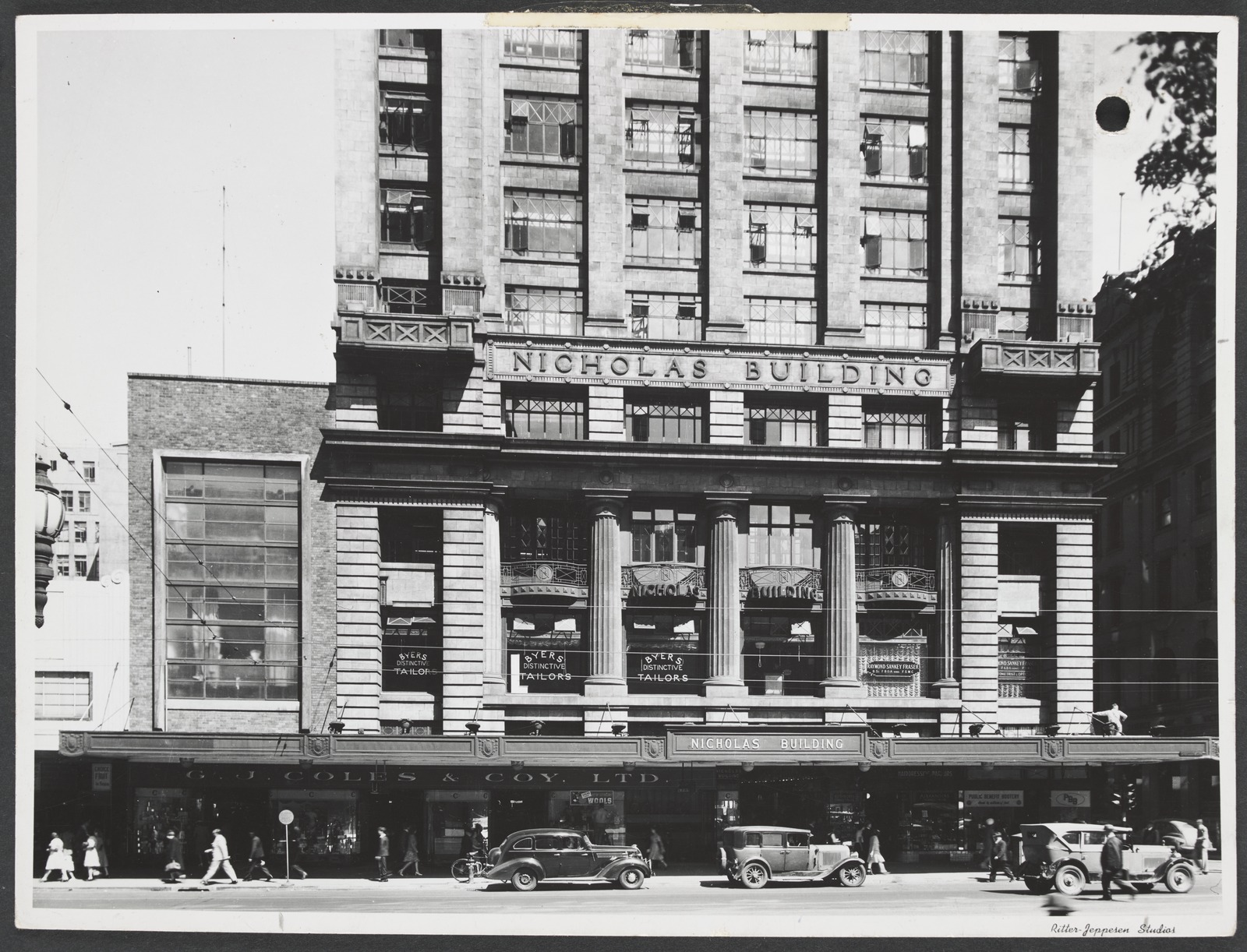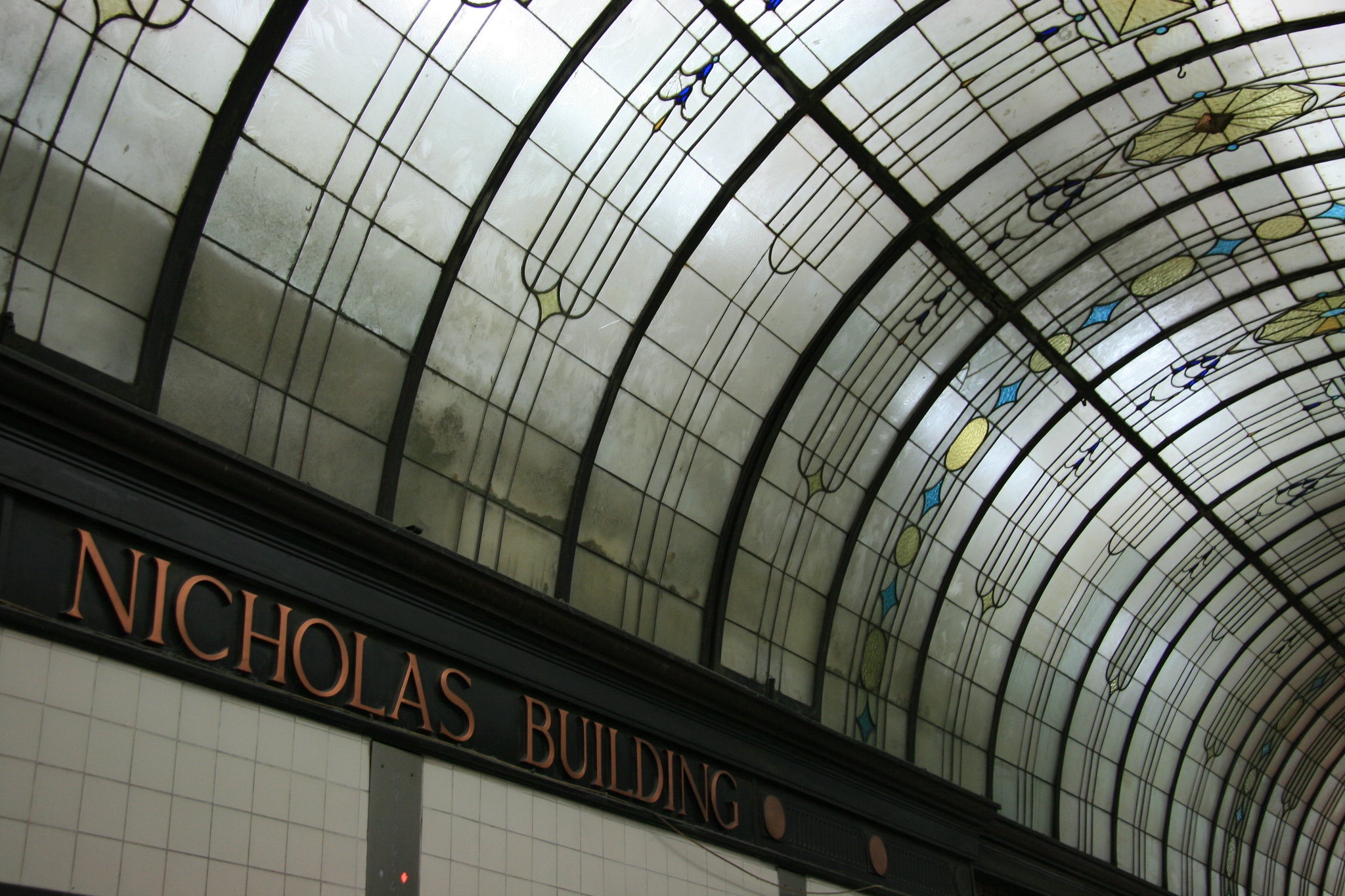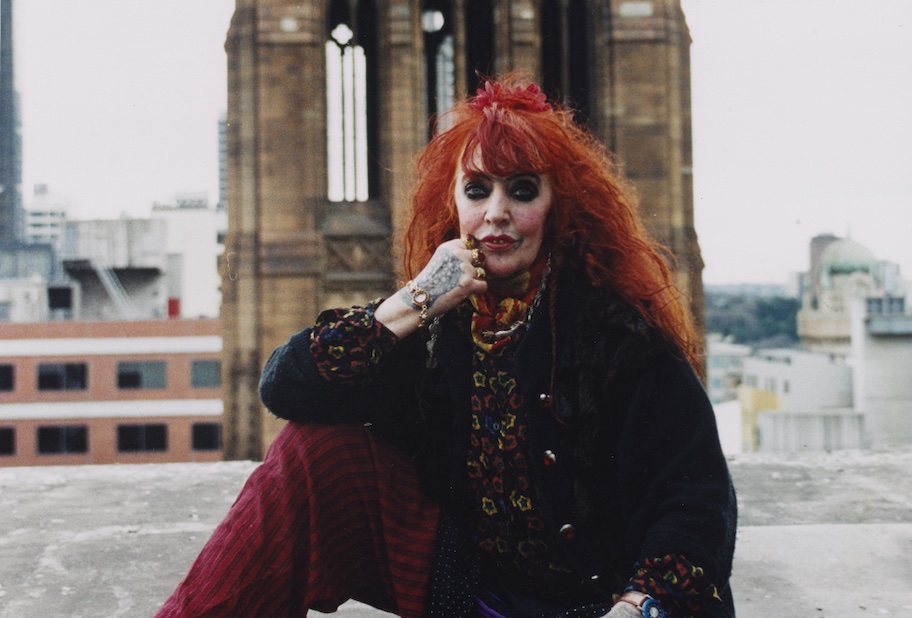
Conserving Melbourne’s creative heritage

With Melbourne’s historic Nicholas Building on the market, we need to rethink the city’s urban heritage to conserve places that have played an exceptional role in our local history
Published 16 December 2021
In mid-2021, the owners of the historic Nicholas Building in the heart of Melbourne put the landmark on the market.
Built in the 1920s and 30s in the moderne commercial palazzostyle – characterised by its use of Renaissance and Greek Revival decorative features – this 11-storey building was developed by Melbourne’s wealthy Nicholas family for office and retail space.

The Nicholas brothers made their fortune in pharmaceuticals and were generous benefactors to many arts and educational institutions at the time.
From the outset, the building was home to businesses from the Flinders Lane garment trade, fashion designers, garment importers and textile manufactures, along with medical and other professional services.
Now, the Nicholas Building provides more than 100 spaces for small businesses, artists and creatives – housing retail, offices, studios and galleries – a central hub for Victoria’s creative industries.

But with the Nicholas Building on the market, this could all change.
Our project team at the Australian Centre for Architectural History and Urban and Cultural Heritage (ACAHUCH) based at the Melbourne School of Design have made a people-centred, collaborative statutory application to Heritage Victoria to amend the Nicholas Building’s state heritage listing.
Our focus has been to identify what has made the Nicholas Building exceptional over its century-long life, centralise community perspectives in heritage processes and more holistically recognise the cultural significance of this historic building. It’s a pressing opportunity to advance Australian heritage practice.
The existing heritage listing concludes that the building’s heritage significance effectively lies in its design by prolific Melbourne architect Harry Norris. This includes the building’s exterior facades, the ground-level Cathedral Arcade, and the first-floor shop fronts. The listing does not highlight the building’s social and cultural history.

There are community concerns that a new owner might evict the existing tenants and potentially transform the building into boutique apartments or high-end offices. This would be a blow to the creative industries and damaging to the place’s unidentified cultural significance.
So, it’s understandable that the communities associated with the Nicholas Building have responded to its impending sale with a collective sense of fear, frustration and sadness.
One key area of this frustration is that the heritage listing appears unable to capture many aspects of what makes the Nicholas Building important: its social, cultural and contemporary histories.

Fortunately, advocacy and activism have long empowered people to question and challenge statutory heritage systems. Our current model for protecting buildings and sites like this only emerged in the 1970s as a direct result of activism.
Recent heritage disputes over, for example, Federation Square or the Djab Wurrung’s sacred trees have also shifted how cultural significance is managed.
Earlier this year, the Nicholas Building Association, representing the current tenants, launched a campaign to Save the Nicholas Building creative community.
The campaign has garnered more than 13,000 signatures on its online petition, widespread coverage in the arts and metropolitan media and the attention of creative, political and community leaders.

Our project team took the perspective that the historical, aesthetic and social significance of the Nicholas Building has evolved over time and is, in fact, always changing.
The remarkable contribution of Harry Norris and the Nicholas brothers was to create a diversity of beautiful spaces that could be loved and adapted by generations. Few, if any, commercial buildings in Victoria have been used for creative purposes for such a long time – and continue to support artistic and artisanal endeavour in this way.
This means that the original floorplates, circulation spaces and mixed tenancies have vital cultural significance.

Heritage management has traditionally ignored the incredible dynamism and community relationships that make many places culturally significant, but perspectives are changing.
Adopting a people-centred approach, our project involved collaboration with building tenants and representatives from the arts and heritage sectors, along with a peer-review of the existing Victorian Heritage Register listing.
We identified six gaps in these existing heritage protections:
1. The early social and cultural history of the Nicholas Building and the Nicholas family;
2. The aesthetic, functional and historical aspects of the interior spaces, including foyers, technologies, offices, and studios;
3. The historical role of the Nicholas Building in Melbourne’s de-industrial and regenerative transformation of the late-twentieth century and the emergence of the creative industries;

4. Associations with the trailblazing woman bohemian artist Vali Myers, 1990s–2000s;
5. The Nicholas Building as an endangered or rare class of place linked to both the early-twentieth-century Flinders Lane rag trade and Melbourne’s late-twentieth-century regeneration; and,
6. Ongoing community, cultural and social value for the Victorian and creative communities.
Heritage has also traditionally been poor at capturing the life stages of buildings.
Our proposal identifies how the Nicholas Building has helped in recent decades to bolster the transformation of Melbourne into a 24/7 global liveable city and renowned creative industries hub.
The Australian artist and activist Vali Myers, who once held Rooms 701 and 702, made the Nicholas Building into a ‘Bohemian oasis in the centre of Melbourne’; including her in the heritage listing is a step closer to counterbalancing the under-representation of women in the Victorian Heritage Register.
Our amendment application re-nominates the Nicholas Building towards six of the eight state heritage criteria and will be assessed by Heritage Victoria and the Heritage Council of Victoria.
A revised heritage listing would more holistically capture this place’s cultural significance, providing certainty for the new building owners, the existing tenants and the wider community.
Our project also aims to set a precedent for how to implement people-centred approaches for re-evaluating the historical, aesthetic, social and cultural value of early-twentieth-century heritage places – and conserve historic landmarks like the Nicholas Building.
Banner: The Nicholas Building/Wikipedia

